If you want to improve your artwork quickly, here are the drawing tips for beginner artists that you must know!
At times, going through the artistic path, there are struggles. These are mainly in our head. Blocking us from moving forward and take pleasure from our own art.
I did have my struggles, sometimes they still happen. This is quite normal, especially as a beginner, where everything is new for you and will appear to be very difficult. Been there and after hitting my head against a wall, quite a few times, I discovered ways and tricks to take art in a more caring and easier way.
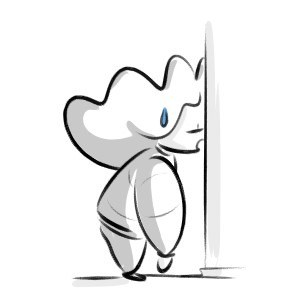
Very quickly put, the secret is to take baby steps. Start with the basics of basics. Don’t overwhelm yourself.
How to do so?
Let’s see!
Here are all the art tips, and right after each one is explained thoroughly!
- Avoid Smudging Your Paper
- Hold Your Pencil In Different Ways
- Start With The Basics Of Drawing
- Study Life
- Try Different Drawing Techniques
- Use Silhouettes
- Copy Other’s Work
- Keep Your Sketchbook With You
- Use Drawing References
- Consistency Is Key
- Know Your Drawing Tools
- Loosen Up
- Exercise Your Wrists And Back
- Join An Art Community
- Scribble The White Paper Right Now
Here are 5 of them if you’d like to see a quick video:
Now let’s talk about each one.
Table Of Contents
- 1 1) Avoid Smudging Your Paper or Drawing Tablet
- 2 2) Try Different Ways to Hold Your Pencil
- 3 3) Start With The Basics Of Drawing
- 4 4) Study Life
- 5 5) Try Different Drawing Techniques
- 6 6) Use Silhouettes When Designing Characters
- 7 7) Copy Other’s Work (in a Smart Way)
- 8 8) Always Keep Your Sketchbook With You
- 9 9) Use Drawing References
- 10 10) Keep A Consistent Schedule For Drawing
- 11 11) Know Your Drawing Tools
- 12 12) Loosen Up
- 13 13) Exercise Your Wrists and Back
- 14 14) Join An Art Community (Online or Offline)
- 15 15) Scribble That White Paper Right Now!
- 16 Bonus: Practice, Practice, Practice!
1) Avoid Smudging Your Paper or Drawing Tablet
Surely you’ve had your battles with this issue. This is one of those drawing tips that every beginner artist should master!
There you are, taking some time and having fun with your drawings, when, suddenly! A smudge of ink or graphite appears on the paper.
Who had the gall to do this to you? How dare they destroy your drawing like this??
You turn your hand, it’s smudged as well. Unbelievable, the betrayal!!
Betrayed by your own hands, dirtying your paper and ruining your good time!
This is exactly how it goes with everyone, right?
As terrible as it is, this matter can be avoidable.
The most economical way to go about it is to use an extra sheet of paper. Just put it in between your hand and your drawing, and you’ll be able to avoid smudging or smearing.

Another option, and the one I recommend the best is to get an artist glove (Amazon Link)!
This glove will cover about half your hand, your pinky and ring finger are hidden and protected by the cloth. This way, you can draw comfortably and your hand will always be protected against the medium you’re using!
With the glove, you’ll not only be avoiding smudges, without worries, but you’ll also look very cool, using one.
So, two points for artist gloves, in my opinion!
You can check the 5 Best Artist Gloves here.
This is also very useful if you use a drawing tablet.
If you haven’t tried it yet, but are curious, I did write quite a bit about them over here in this post about Drawing Tablets. Do take a look at the options and have fun with some digital painting.
P.S.: Talking about hands, if you’re looking to get better at drawing hands do check out my 5 Best Tips For Drawing Amazing Hands Easily!
2) Try Different Ways to Hold Your Pencil
This might seem like a strange drawing tip for artists, but it really works!
In fact, it’s something that is taught and imprinted to us as kids.
Some people might tell you that you should hold the pencil this way or the other, but here’s the deal, unless you’re hurting your hand or wrist, hold it as you want!
Sometimes, your drawings or even your writing might not be going well, simply because the way you’re holding your pen, pencil or brush isn’t appropriate for you.
I’m a left-hander.
At school, I’d constantly tilt my pages, so I could write comfortably. That’s how it worked for me. I would take the paper out of my dossier, tilt it and start to write. If I was using a book, I’d do the same.
Sometimes I would fold the books to make this even easier.
Around 6th grade, I had a teacher that was adamant in me writing in the “proper way”.
She wouldn’t let me take the pages out of my dossier and wouldn’t let me tilt my pages or books. This made me work slower and it was so uncomfortable, that my hand would actually start to hurt.

Today, I still turn the paper I’m writing on.
At times, even when drawing. Now, I did not have a problem with the pencil itself. It was the surface I was working with that needed to be changed.
The point I want to make here is that there’s no correct way to hold your tools.
There’s no wrong way to go about it and there are no rules.
Hold and use them the way you feel more comfortable with. If someone gave you some advice on how they go about their tools, do try them out, but if you feel that it doesn’t work with you, leave it.
Try different positions, holding it with different fingers and see what works best for you and the results you have with them.
Once again, be careful not to hurt yourself! Find the most comfortable way to draw, without it hurting you.
3) Start With The Basics Of Drawing
Hey, I know it’s really cool to see awesome Dragons, other creatures, Characters, and whole Cities.
But one thing you’ll notice right away is that you won’t be able to draw any of these so well and so detailed, right off the bat.
You might see pieces that will inspire you and motivate you to draw.
That’s good! Keep that, have a goal.
But don’t try and reach your goal right away. It won’t happen, it’s not that easy, especially if you haven’t picked up a pencil in a long time.
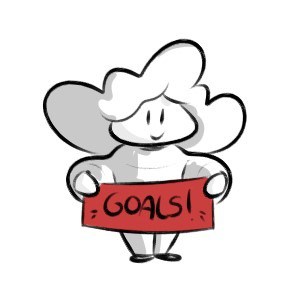
Baby steps.
You need to learn the basics first.
By basics, I mean, you need to learn Perspective, Composition, Line, Shape, Values, Colors and Texture. This is one of the biggest drawing tips that I can give to any beginner artist.
All these names might sound very intimidating right now, but they don’t need to be.
Once again, start with the most basic you can find. Start with simple lines!
Just scribble straight lines on your paper. Vertical, horizontal, diagonal.
This might seem way too easy, but trust me, being able to draw a straight line without a rule is not easy. Test it out, do this exercise.
Once you got that, practice curved lines. Now you’re ready for shapes, so practice that as well.
Drawing might seem like a very big ordeal, but you can cut it into smaller parts, to make it easier for you to start with.
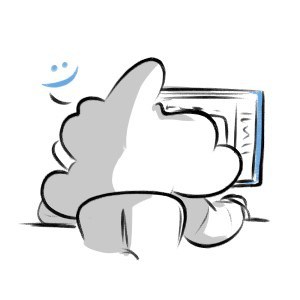
I would recommend you start with a simple course like my own where we take a practical approach in Figure Drawing.
I’ll always take you step by step on how to draw a specific subject. It’s very simple and fun!
But if you’d like to learn on your own and do all the research, that can work as well.
It might take you some more time, but remember, that being an artist and drawing is all about observing!
That’s how you learn, by observing the object/subject you want to draw, or by observing others drawing.
4) Study Life
Like I said, look and observe the things around you.
To learn, you need to study what you want to draw. To look at it. There’s no other way to go about it.
This is how you learn to draw anything in life. Even when going for a more fantasy setting and for the ideas that run through your head, you’ll grab reference from real life objects, animals or people.
Do practice sketches of things around you, this will help you see things differently.
Don’t try to think how a Ball looks, actually look at the ball and draw the shapes you see and how the light shines on it.
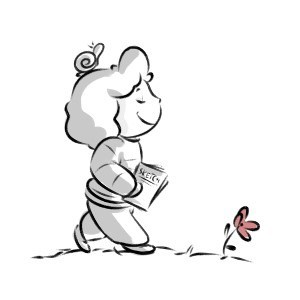
This is also great for drawing people if you’re able to get into a live figure drawing class, if not, there are always alternatives online, like these free pose reference websites!
Making studies from real-life examples, will not only let you understand better how to draw something. It will also give you a better understanding of perspective and dynamic/movement.
So, do try and take some time to practice some life studies!
And if you’re looking for more drawing tips for drawing anatomy, do check out this article.
5) Try Different Drawing Techniques
It will take you some time to figure out your own style and how and with what do you like to draw.
Today, I’m still finding new tools that I like to work with.
This seems like a very simple step, but very important. For a time, I stopped experimenting and being curious about what other forms of art could I try.
As a kid, I tried theater, dancing, took drawing classes, decorative art classes, and others.
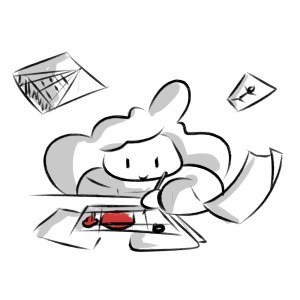
At some point, I stopped.
I can’t really pinpoint the reason for it to happen, but part of it was that I started to feel intimidated by art. That maybe I wasn’t as good as I thought. So I faltered.
This took a blow in my creativity and how I saw art.
After a time, I saw this and understood that it was preventing me from actually moving forward with my art.
So the best advice I have for you is to experiment!
From shading techniques to changing your line weight, to smudging.
There are a lot of cool drawing techniques for you to try. So don’t be shy and try everything that you can! Apart from techniques, try different materials as well!
You might even find your own personalized art style while you’re at it.
6) Use Silhouettes When Designing Characters
One of the most important parts of Character Design is making it a recognizable character with a strong presence. This is one of those drawing tips that goes hand in hand with drawing Thumbnail sketches.
For this, start with a silhouette and don’t clump every detail together.
If you already have a character that you’re working on, draw a silhouette around it and see if it’s easily recognizable. If not, rework it until it is!
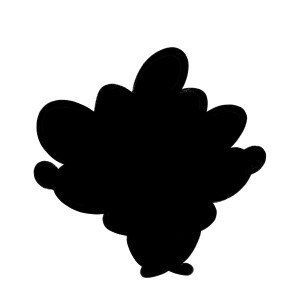
And in case you’re starting now the process of creating a character, you can just start with black silhouettes and let your imagination run free.
Make skinny characters, short characters, creatures with a lot of arms and legs, just have fun with it!
Doesn’t matter if you’re drawing in a cartoon style or not. And if you are drawing in a cartoon style, do check out my 16 Best Cartoon Drawing Tips For Beginners!
As always, start simple. Simple shapes and silhouettes.
You’ll see that the process will turn out much easier, starting this way.
7) Copy Other’s Work (in a Smart Way)
Yes, you read that right.
This drawing tip is to copy other artists work. A very handy drawing tip for beginner and even professional artists!
Copy other people’s work and practice! Look for old masters, artists that you find amazing, and try to replicate their art.
I talk a bit more about this over here in this Article about creating Original Art but do keep in mind that this is just for practice purposes, so I wouldn’t post it online or claim it as your own (that’s a felony).
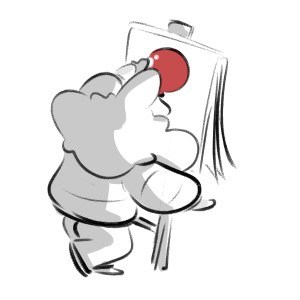
This exercise is only for you and a way of learning.
As you try to replicate these drawings, you’re trying to understand why the artist drew things the way they did and also how.
This is a good exercise for whenever you feel stuck with your art and you can’t figure out how to draw something in specific.
8) Always Keep Your Sketchbook With You
Having somewhere to lay down your ideas at any time can be a powerful drawing tool.
Inspiration can hit at any time and anywhere, so I do recommend grabbing a Sketchbook (like the ones I talk about in this Article) and keeping it near you.
Drawing is 50% about seeing and observing what you want to Draw. The other 50% is actually Drawing it.
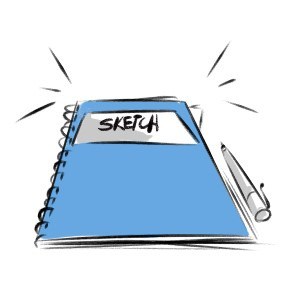
Other than that, you don’t need to use your sketchbook merely for drawing.
You can have studies of something you found. You can attach flyers, tickets, photographs that you found while walking or traveling around.
Anything that might give your inspiration and ideas can and should be part of your sketchbook.
Noting down ideas that occurred to you as you commute from work/school to home, count as well.
Sketchbooks are your friends, so do try and bring one with you at all times, even if it’s really small!
9) Use Drawing References
No, using References is not cheating.
If you don’t know how to draw, look for a reference for it!
Rule number 1: Always use references!!
This is an important part of learning to draw and an important drawing tip for beginner artists! I’ve been over this quite a lot already, so I’ll make this short.
You need to look at things, to learn them and how to draw them. So gather those things, even if it’s only in images from the internet.

Gather references from everywhere you can and use them!
People, landscapes, creatures, anything works. I often use Pinterest to look for reference images. Be it either poses, outfits, sceneries, and even color ideas!
You can even take pictures of things that you saw and you liked with your camera or phone.
Then, save them somewhere on your computer, so you can check them whenever you need.
10) Keep A Consistent Schedule For Drawing
This is a tip for both Drawing and for pretty much anything that you want to improve in your life.
Try to keep to a schedule, draw every day even if it’s just for 10 minutes. To improve, you need to practice.
Try and practice as much as you can. You won’t get amazing drawing skills from one day to the other. This is one of the fundamental drawing tips that I have to share with you.
This will develop your muscle memory. As you do it and improve, you’ll draw subjects that you’re already used to, faster and more easily!
Consistency in your own Art is also very important, so after you’ve studied a lot of Artists that you love, stick to what you can do and keep going.
Refine your own art style and don’t try to mimic everything that you see. It’s your style, no one else’s!
11) Know Your Drawing Tools
Doesn’t matter if you’re working Digitally or Traditionally, know your tools.
Try different software, different mediums like watercolor and charcoal or different brushes.
Once you’ve tried a lot and found some that you like, use them until you’ve perfected them!
Know what you can do with them, search online for what people are doing with them and keep going.
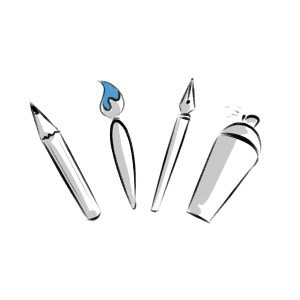
It’s not the tool and how good it is that matters, but what you do with it.
Feeling comfortable with your drawing tool is a big part of your success in improving your artistic skills.
Master your tools!
12) Loosen Up
Relax. Don’t take it too seriously.
By doing so, you’ll only be too hard on yourself and get frustrated with drawing. That’s not what you want.
This is something you love and that makes you happy, so let’s keep it like that.
Art isn’t meant to be stressing.
I know it can be sometimes, I’ve been there. So don’t try to force it if you’re not quite able to relax and go with the flow at the time, just chill down a bit and come back later.
Rome wasn’t built in a day.
Anytime I feel that my drawings aren’t going the way I want them to, I’ll stop. For weeks if needed! If I’m not having fun with my personal projects, I’ll take a break from them.
I let them and myself rest for a bit until I feel I’ve got it handled again.
Remember, your art will improve over time and with practice.
13) Exercise Your Wrists and Back
This is very important and you should never skip it!
Sitting for long periods of time drawing is a very fun thing to do. Unfortunately, it’s not very good for your back or wrists.
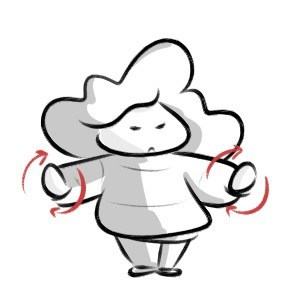
So remember to do some wrist exercises so you don’t get any injury, and walk a bit around the house or neighborhood from time to time so you won’t mess up your posture.
This can have major repercussions later down the line, so thank me later!
Simple warm-ups before starting to draw and always take breaks every hour! Take care of yourself, so you can keep drawing for longer.
And if you’re hurting already, do check out my article on the 12 Hand Stretches For Artists: Hand And Wrist Pain.
14) Join An Art Community (Online or Offline)
Companionship is amazing.
Having someone that you can talk about the problems you’re having with your Art, or just to vent for a bit can be very helpful. I highly suggest you enter some sort of artistic community.
If you can find one near your home or city, that’s great!
If not, there are a lot of communities to check out online. So consider checking art related subreddits, art forums, facebook groups and so on.
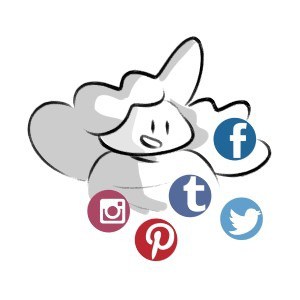
Depending on what exactly you’re looking for (drawing with charcoal, digital painting, and so on) just do a quick google search: “digital painting community” and you should be able to find something very quickly!
Try a few different ones and then try to be active on the one you enjoyed the most, help other people with your current knowledge and accept criticism from other artists!
Communities are also available on online teaching platforms.
You can enter some Drawing Courses, where you can ask questions and ask for critiques on your work. So if you want to learn through videos, consider those!
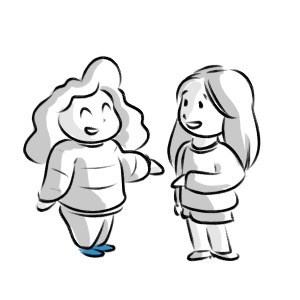
You can always join art classes in your city, or nearby you and make new contacts from there.
Meeting and talking with other artists is always helpful, not only to learn more but also so you can motivate each other.
15) Scribble That White Paper Right Now!
Creativity won’t hit you out of anywhere.
At least most of the times it won’t. Having a Fear of Drawing can be a serious setback to yourself. So once you open up your sketchbook, immediately draw something in it.
Don’t try to overthink it, just do it.
Your brain tends to freeze when you’re staring at a blank paper, this is also a sort of phobia. Once you get the ball rolling though, that will be gone in an instant.
The trick here is to just pick up the pencil and your sketchbook and don’t think.
You’ll spend and waste too much time, trying to come out with a theme or subject to draw. Instead, just start scribbling random lines, while listening to some music, a podcast or your favorite streamer/youtuber!
Sooner or later, an idea will come up and something will come out of it.
Start with a simple smiley face or a stickman.
Or draw a Corgi and send it to me, that would make my day! (@artbydoncorgi)
Bonus: Practice, Practice, Practice!
You’ve heard it a thousand times already, but here’s once more: Practice!
Practice each day when you have a break, even if it’s on a tiny piece of paper while you’re in the toilet, just do it!
Don’t give the “There’s no time” excuse.
Even those weird doodles you did, while you were seated at a meeting, or waiting for your meal at the restaurant, count as practice and you’re improving and learning from that.
Here are a few Drawing Styles for you try right now!
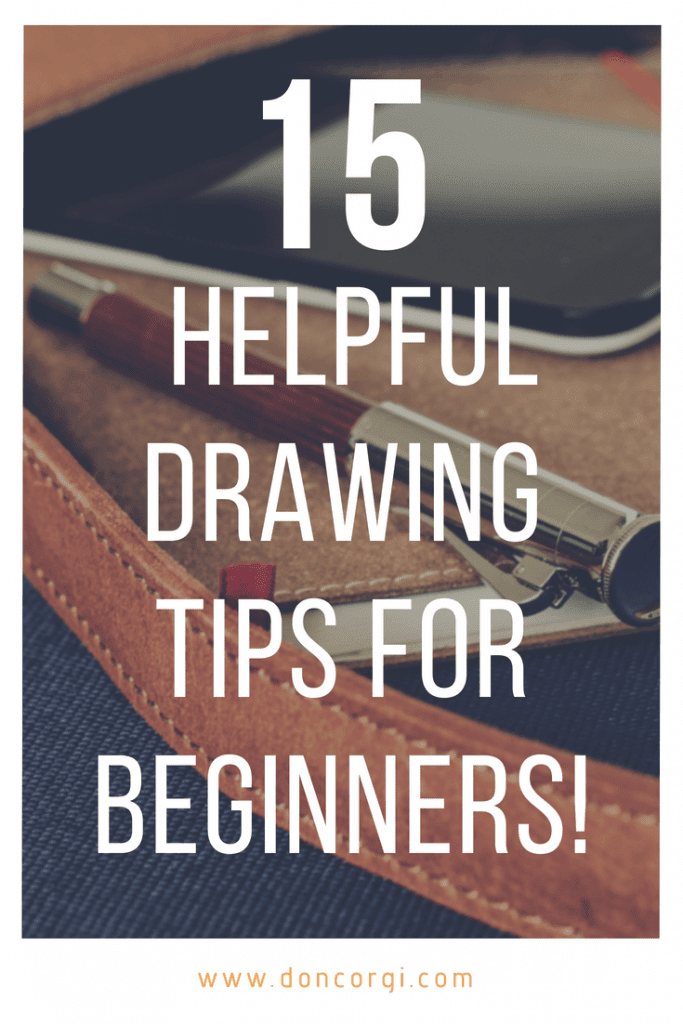
Patricia Caldeira is the main writer here at Don Corgi. She's an art teacher with over 20.000 happy students across many platforms and courses!
Enjoy your stay and as always:
Keep on drawing!




Thank you so much 😊
You’re welcome!
I need this kind of encouragement, I do so want to be an artist, particularly in watercolours. Thank you.
You can do it Keith! Focus on learning and taking one step at a time.
Most of all:
Don’t stop.
Have Fun!
Thankyou for your insights and advice. I’m a fellow leftie and experienced the same difficulties as you describe. I’m really looking forward to spending time learning how to draw with you.
My pleasure Shirley, glad it’s been helpful to you!
I’m super happy that even Drawing Tablets now have options for us lefties, super useful.
Enjoy the content, courses and everything else. Let me know if you need any help! 🙂
Lovely to hear from you. Thankyou.
Oh my – years ago I wrote a story for my granddaughter and without fear or thought of my artwork being judged by a six year old I theough inhibitions out the window and has fun doing the illustrations.
Now the story is to be published and Yes Wooo Yay excitement at first, which is slowly being strangled by the iron grip of fear and lack of confidence knowing that my pictures will be as important to the success as the words in the story.
And that is my life in a nutshell and why I am so happy to be taught by someone who understands.
Best wishes
Shirley
I totally understand! People say “don’t judge a book by its cover” but that’s what covers are for, we judge the images right away!
Nonetheless, I wish you the best of luck with your book, keep perfecting your skills.
Oh and happy holidays!
– Patricia